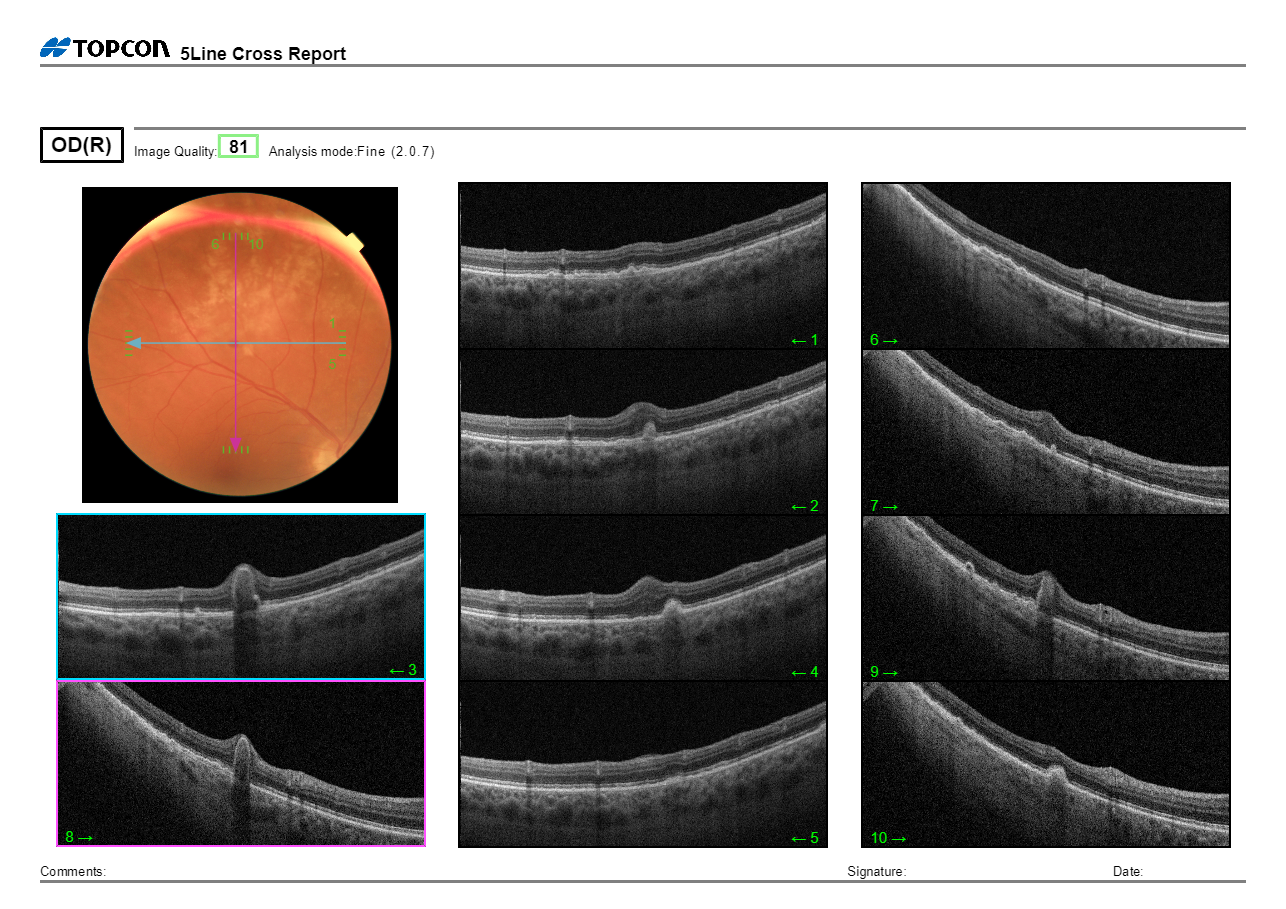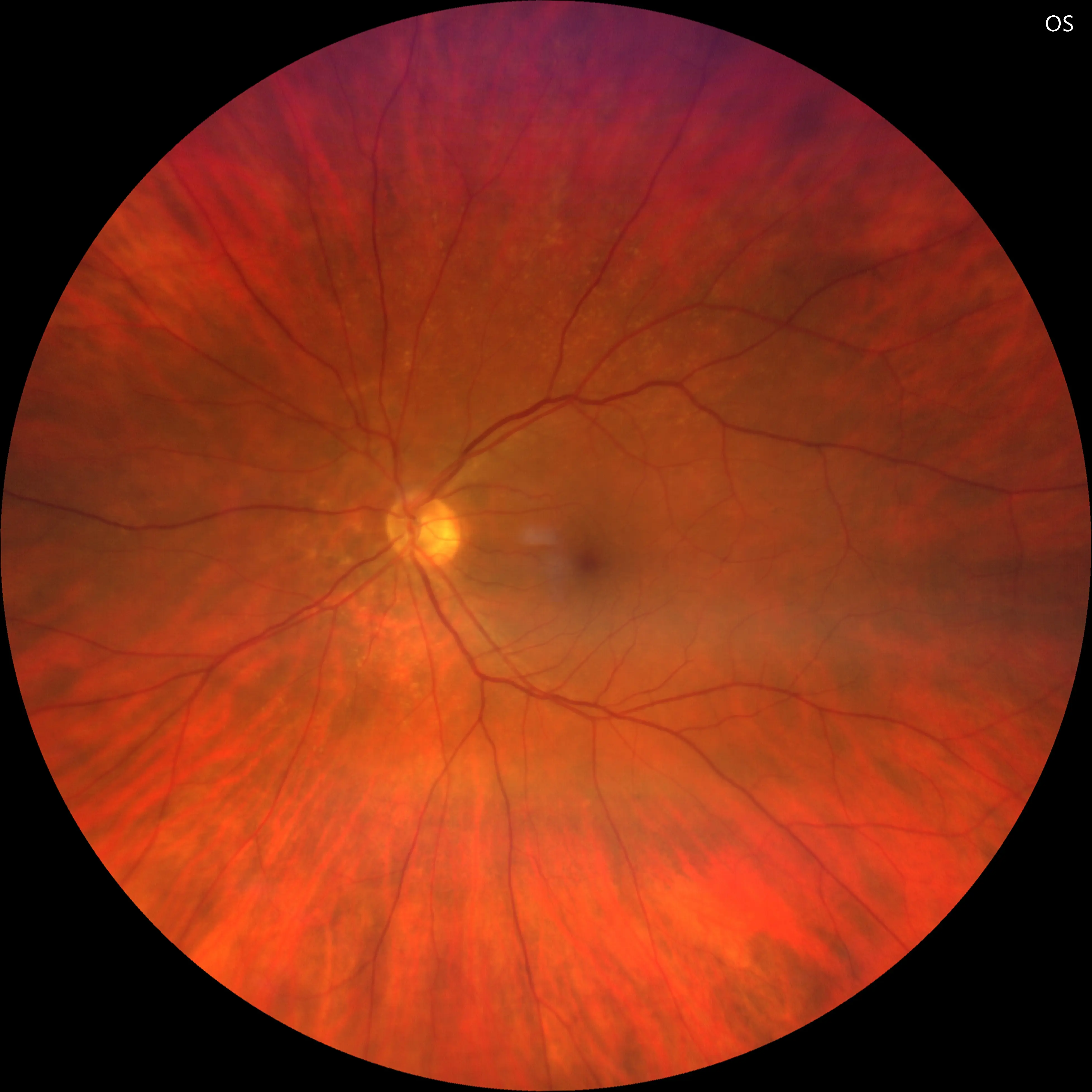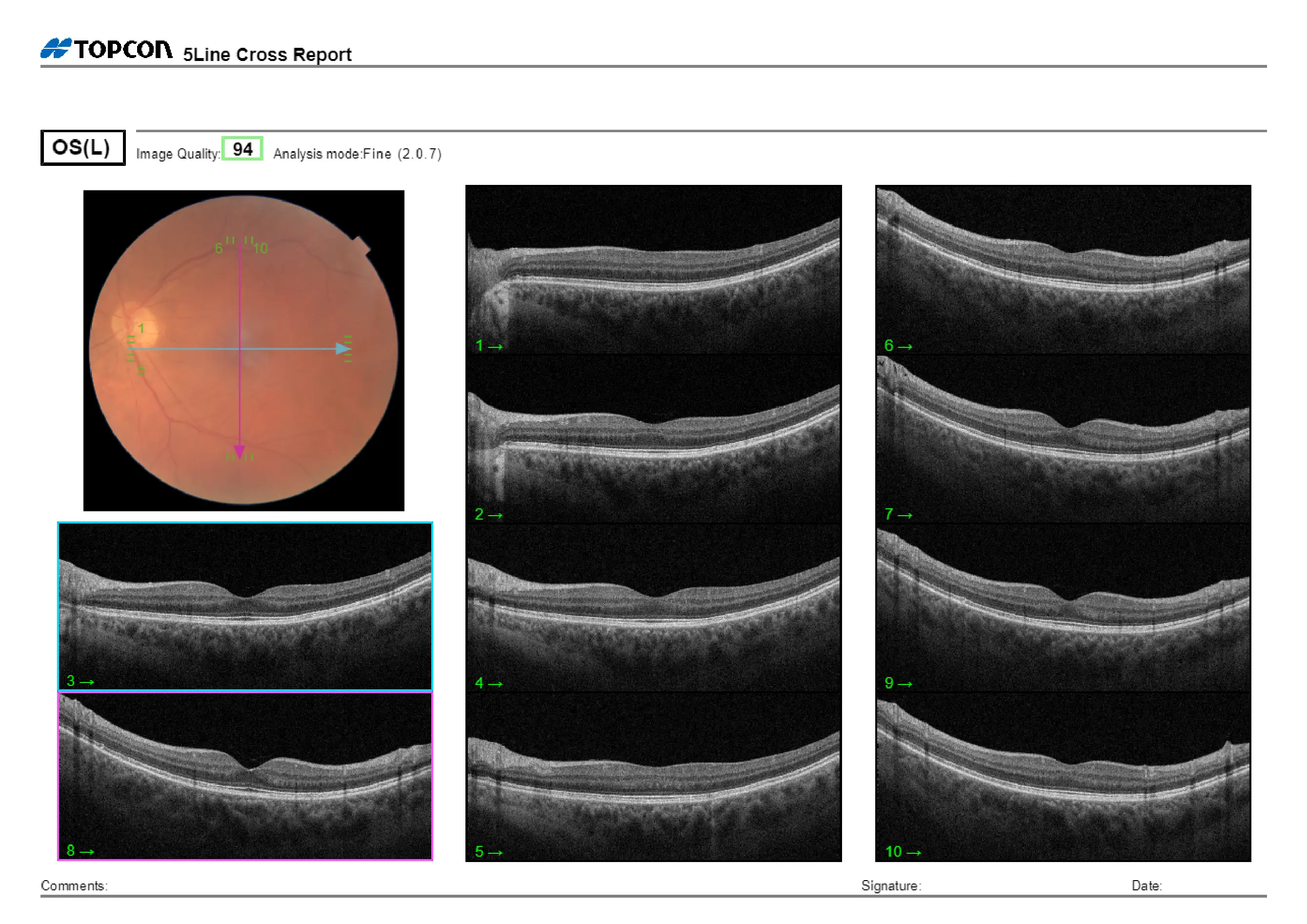
A 60-year-old female was uploaded to Care1 by her optometrist following a routine contact lens follow-up, during which signs of peripheral choroidal neovascular membrane (CNVM) and subtle retinal hemorrhage were incidentally detected in the right eye. The patient's medical history includes drusen, arteriovenous (AV) nicking, and stable visual acuity of 20/20 OU. Peripheral CNVM OD is being monitored conservatively.
See how Care1 enabled fast specialist input within 1-2 weeks and ongoing collaborative care.




This 64F presents with paramacular drusen OD > OS, and a small (~200μm) hemorrhage above the superior arcade. Findings are stable and unchanged. Arteriovenous nicking OD > OS suggests possible hypertensive retinopathy.
The peripheral CNVM OD appears stable. Continue monitoring every 3–4 months, and provide the patient with an Amsler grid and education on symptoms of progression.
This is a moderately uncommon case combining early AMD features (drusen), vascular signs (AV nicking), and a rare peripheral choroidal neovascular membrane (CNVM). While paramacular drusen and AV nicking are common in older adults, peripheral CNVM occurs in a small subset (~1–2%) of AMD or myopic degeneration cases. Careful observation and patient education are essential for preventing progression.
✔ Deliver the highest standards of care
✔ Increase patient satisfaction and retain patients
✔ Stimulate revenue
A study found that untreated PCNMs can in some cases lead to significant visual deterioration, with up to 25% of patients experiencing a decline to 20/500 or worse within three years. The authors emphasize that early intervention in some cases can prevent these outcomes.
Aisenbrey S, McDonald HR, Gass JD. Surgical treatment of peripapillary choroidal neovascularization. Retina. 2006;26(3):327–332. doi:10.1097/01.iae.0000197731.85372.1d